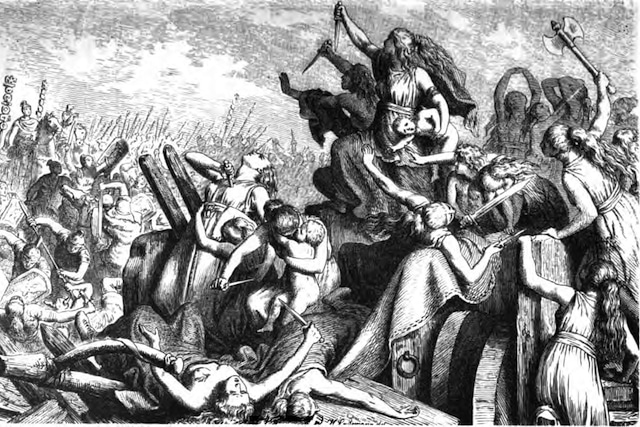

They have amassed a trove of evidence, such as human bones with terrible wounds, hundreds of coins, spear tips, lead sling-bullets, fragments of Roman armor, belt buckles, tent pegs, sandal nails, surgical instruments and a spectacular face mask from a cavalryman's helmet (first picture in the gallery above).īut they have yet to find irrefutable proof that the site near the village of Kalkriese, a low-lying area of woods and fields some 15 kilometers (over nine miles) northeast of Osnabrück, really is the location of that battle.Īlso, questions remain over the sequence of events in the fighting that is believed to have started with ambushes on the thin Roman column snaking through the forest before culminating at Kalkriese in a bottleneck between a hill and a moor. Read more: Germany's sunken 'Atlantis' reappears as tourist attraction It sent a shockwave through the Roman Empire, spawned the first German hero, and is seen by some historians as the main reason why Rome refrained from colonizing the regions north and east of the Rhine River.Īrguably, it explains why Germany to this day is divided into the Roman-influenced, Catholic and - some would say - more fun-loving South and West, and the rougher, cooler Protestant North and East.Įver since the 1987 discovery of the presumed battlefield in northwestern Germany, archaeologists have been trying to piece together how Arminius defeated three highly-trained Roman legions under General Publius Quinctilius Varus, governor of Germania, in four days of carnage. While Arausio was a massive defeat and did result in some political upheval, it resulted in few notable long term events and the tribes we're never able or willing to exploit the victory.The Battle of the Teutoburg Forest, in which Germanic tribes under the Cheruscan warlord Arminius, later idealized as Hermann, annihilated a Roman army of up to 18,000 men in the year AD 9, has gone down in history as the big bang that created the German nation. It also became a story of legend among Germanic tribes and later German nationalism until post ww2. Teutoburg Forest was the most devastating event during Augustus's reign and ended Roman attempts to take over Germany. The fact that Rome recovered from that and prior similarly devastating defeats to win the war showed how even the perfect doesn't equal winning the war and it defined the Roman mindset for years to come.Ĭarrhae resulted in the death of one of the Roman heads of state, fueled the rivalry between Ceasar and Pompey, and began the Roman-Persian rivalry that lasted until the Muslim conquests. This caused Rome to mobilize their entire country to aid the war effort against Carthage.

Even some of the later defeats like the capture of Valerian at Edessa or the disaster at Adrianople in 378 have left a bit of a mark.īut the Battle of Arausio seems like it should be a huge fucking deal, apparently it was the single largest defeat in all of Roman history, almost 100,000 casualties at this one battle! The Cimbrian war was the last time Italy itself would be threatened by an existential threat for centuries, the war was instrumental for Marius and his reforms, and it probably marked the entrance of Germanic tribes as major players in Roman history, why doesn't this get a bunch of documentaries, movies and videogames?!Ĭannae was not only a rare example of a battle plan working exactly as intended but killed off much of the male adult population of Rome and forced the Romans to conduct guerrilla war against Hannibal. People know about things like the catastrophe at Cannae and Hannibal's genius, Crassus meeting a miserable end against the horse archers at Carrhae, or the treachery and cunning of Arminius in the Teutoburg Forest. I was just doing a little reading on Rome and I couldn't help but think that it's really weird the way that the Cimbrian war seems like a bit of a footnote in Roman history when their other major enemies and defeats are so notorious and still have a certain pop history notoriety.


 0 kommentar(er)
0 kommentar(er)
